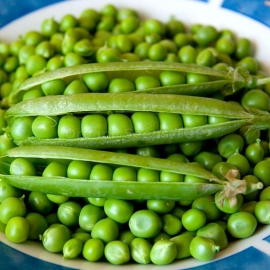
«Progress» - Organic Pea Seeds
1.14 €
Pea is a prolific and early yielding shelling pea! This wrinkle-seeded pea is fast growing and produces plump dark green pods. Enjoy 7-9 delicious peas per pod that are perfect for soups or as a side dish. The Progress holds well on the vine.
-
Heirloom Pea «Progress»
Pea is a prolific and early yielding shelling pea! This wrinkle-seeded pea is fast growing and produces plump dark green pods. Enjoy 7-9 delicious peas per pod that are perfect for soups or as a side dish. The Progress holds well on the vine and is also disease resistant.How to Grow
For best results peas need an open, sunny position with good drainage. Never sow in cold, wet soil; acidic soils should be limed. If spring is slow to arrive, warm the soil with polythene before sowing and then protect seedlings with horticultural fleece. Generally, peas prefer cooler weather and grow well in cool springs.
Make a flat-bottomed trench 5cm (2in) deep and 15cm (6in) wide – a draw hoe is ideal for this. Sow the seeds evenly in the trench approximately 7.5cm (3in) apart, cover with soil, then lightly firm. If you need a second row make this the height of the crop away from the first trench.
Make a single sowing of an early, second early and maincrop variety. First earlies are sown from March to early June and will be ready to pick in 11 to 13 weeks. Second earlies are sown from March to June and are ready in around 14 weeks. Maincrop cultivars are sown at the same time and take up to 16 weeks.
Peas may also be sown in lengths of guttering to germinate indoors for a head start in February or March. Peas are grouped by harvesting time and the shape of the seeds; round peas tend to be hardier than wrinkled varieties. Water well when the flowering begins and two weeks after. Add a mulch around the base of plants to preserve soil moisture.
Apart from dwarf cultivars, you will need to provide some support for the plants to scramble up. One of the easiest way of supporting taller varieties is adding trellis, bamboo canes and netting. Dwarf varieties can be supported with pea netting or pea sticks (twiggy branches).
After flowering, plants need sufficient water for the pods to swell properly. Check the soil moisture at root level to find out if the plants are getting enough water.
